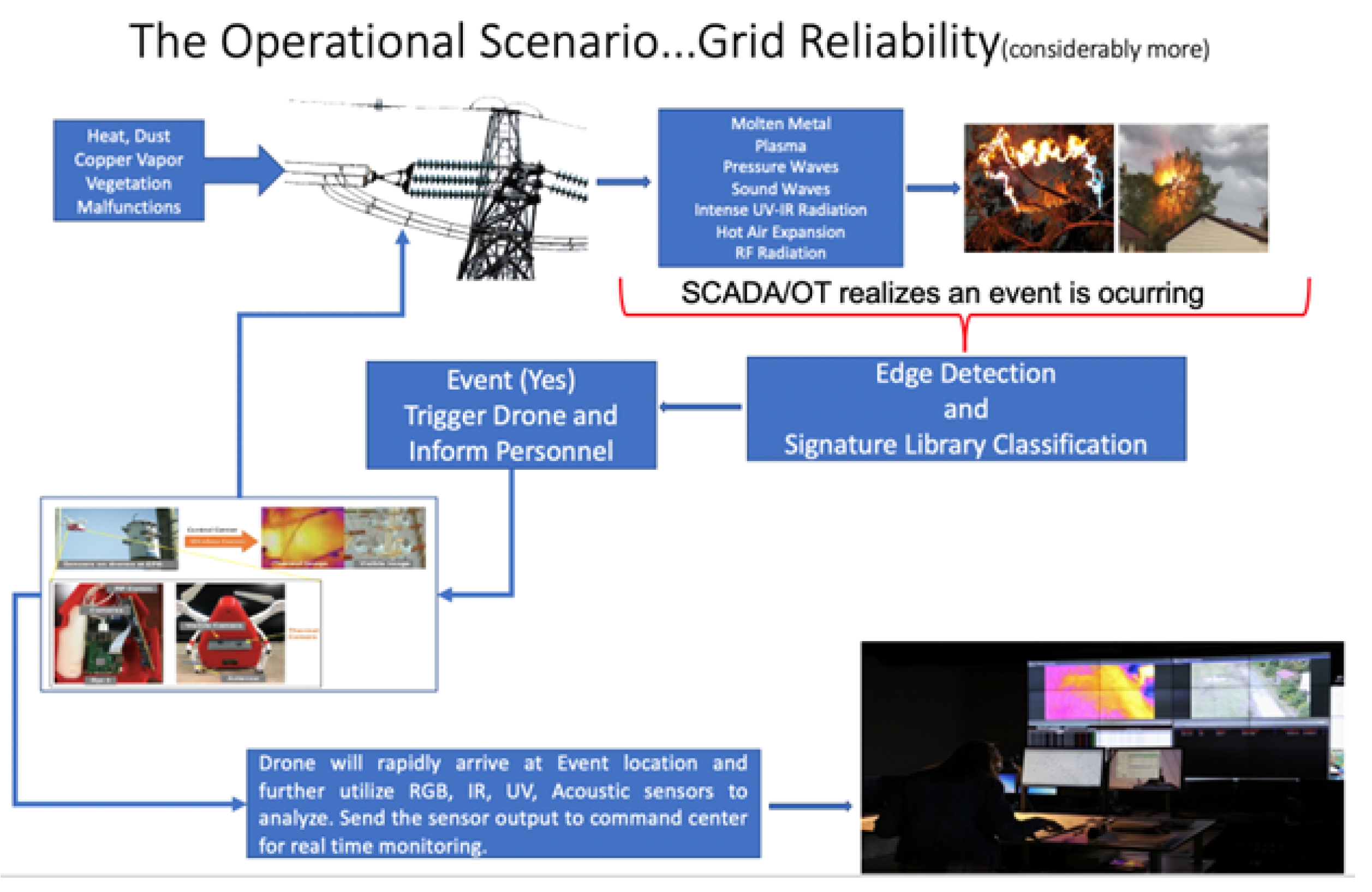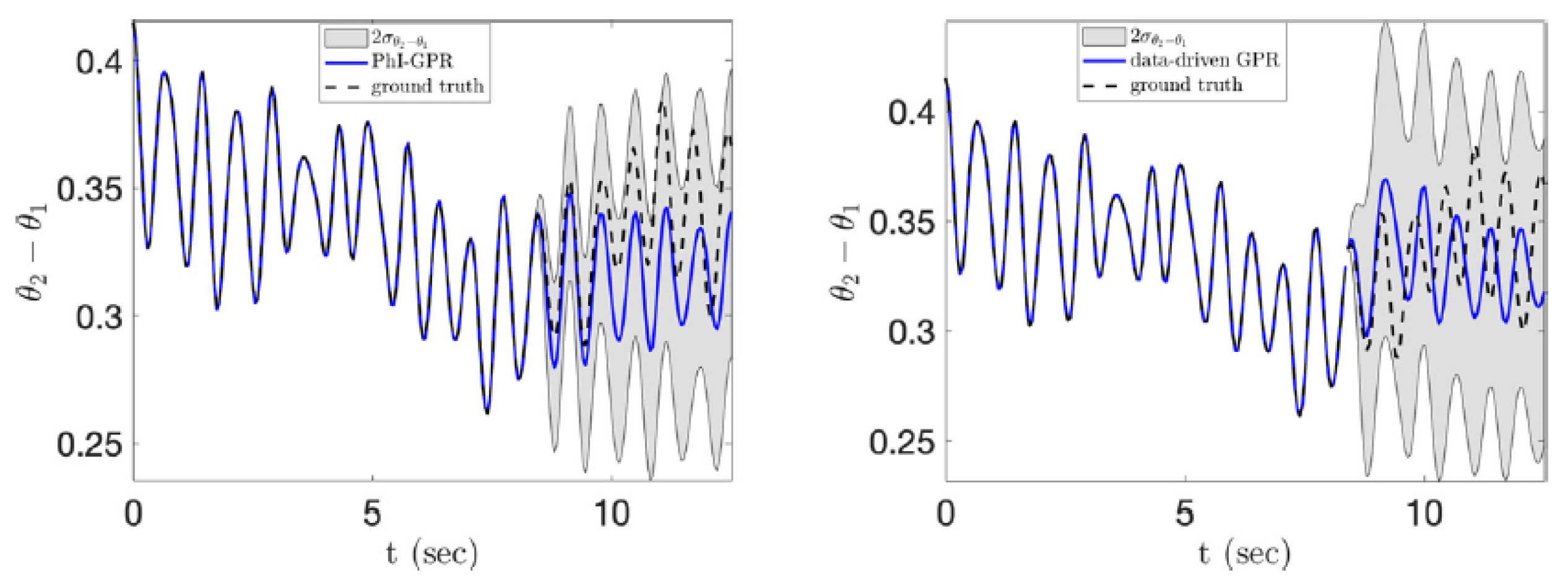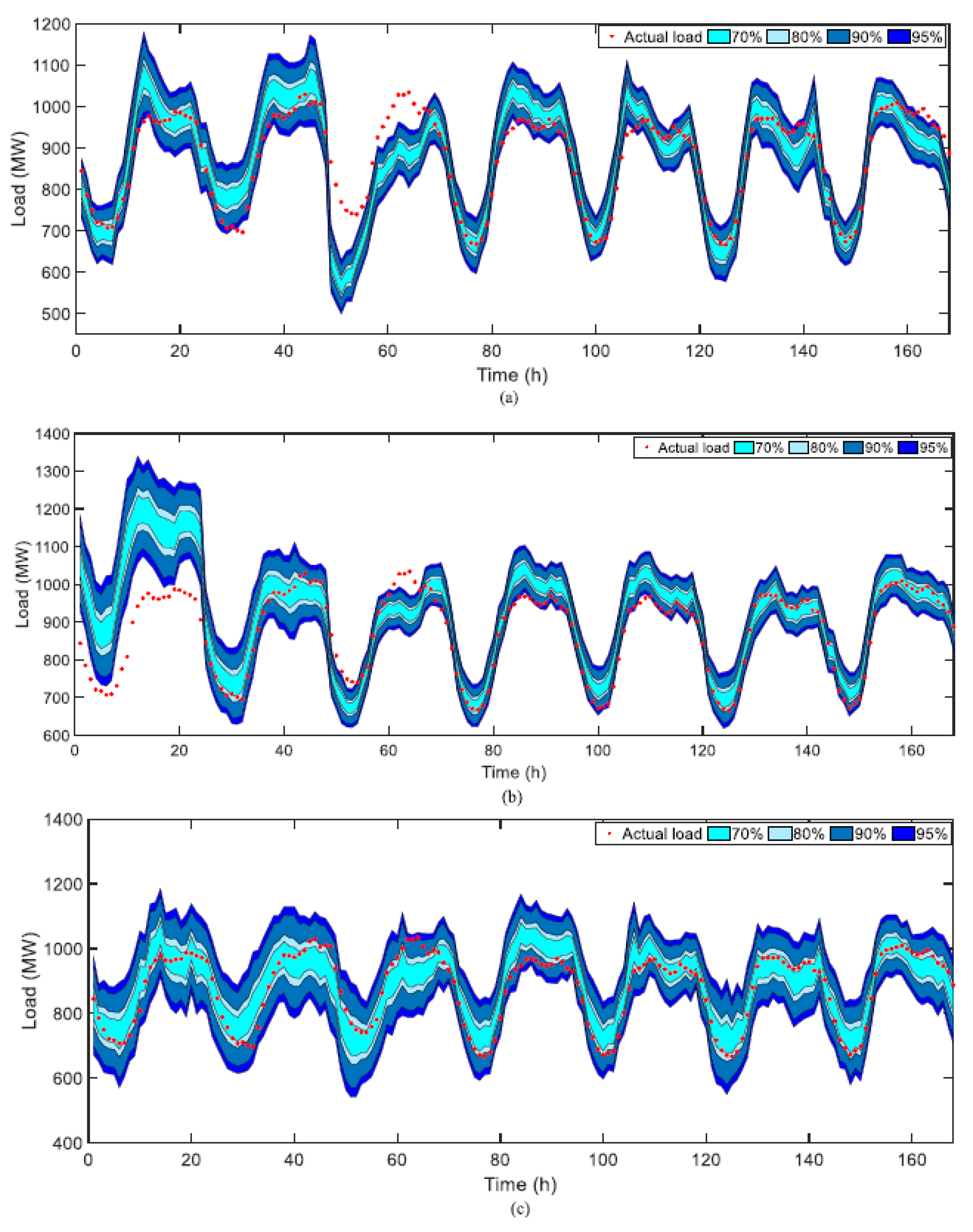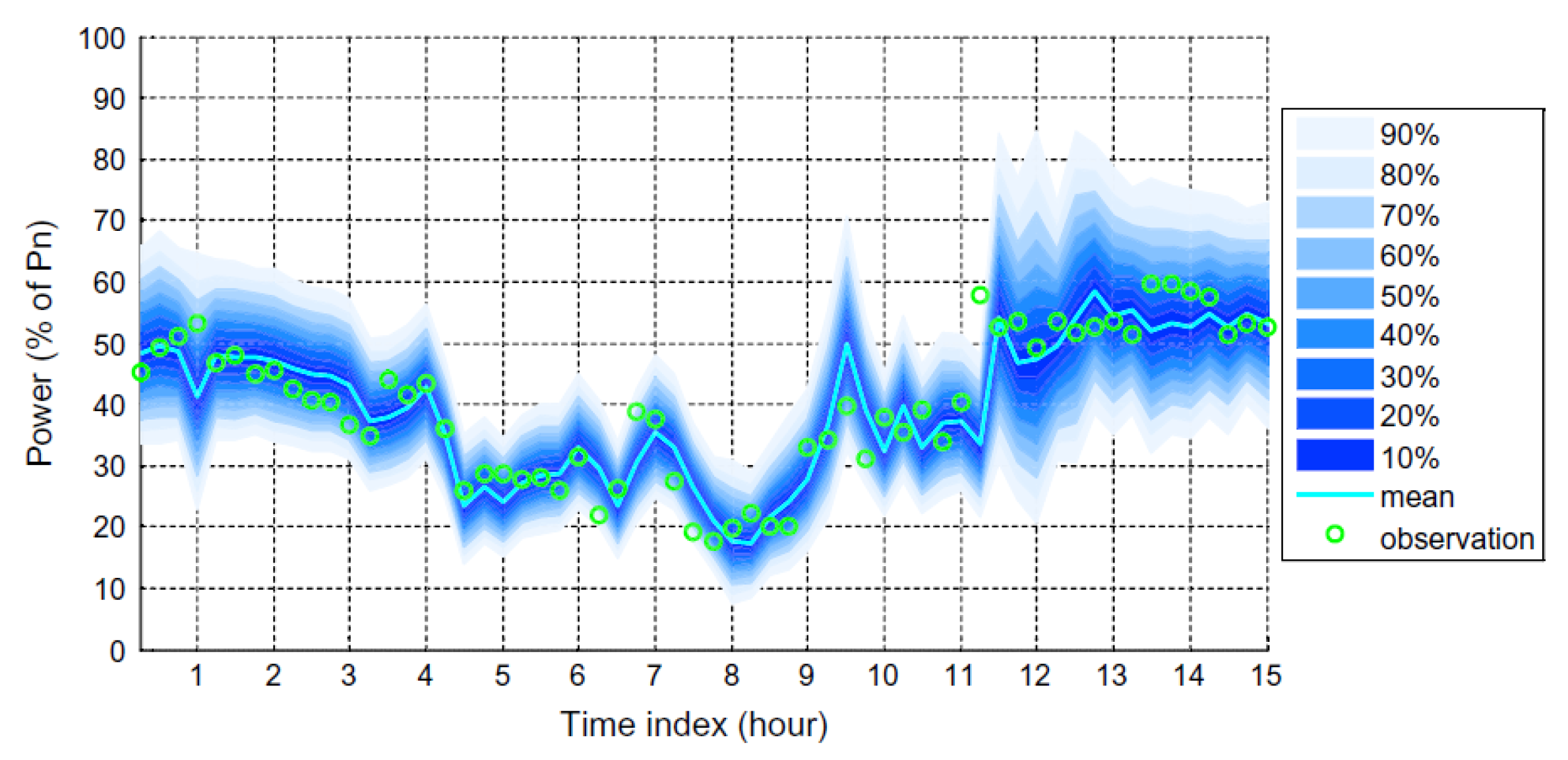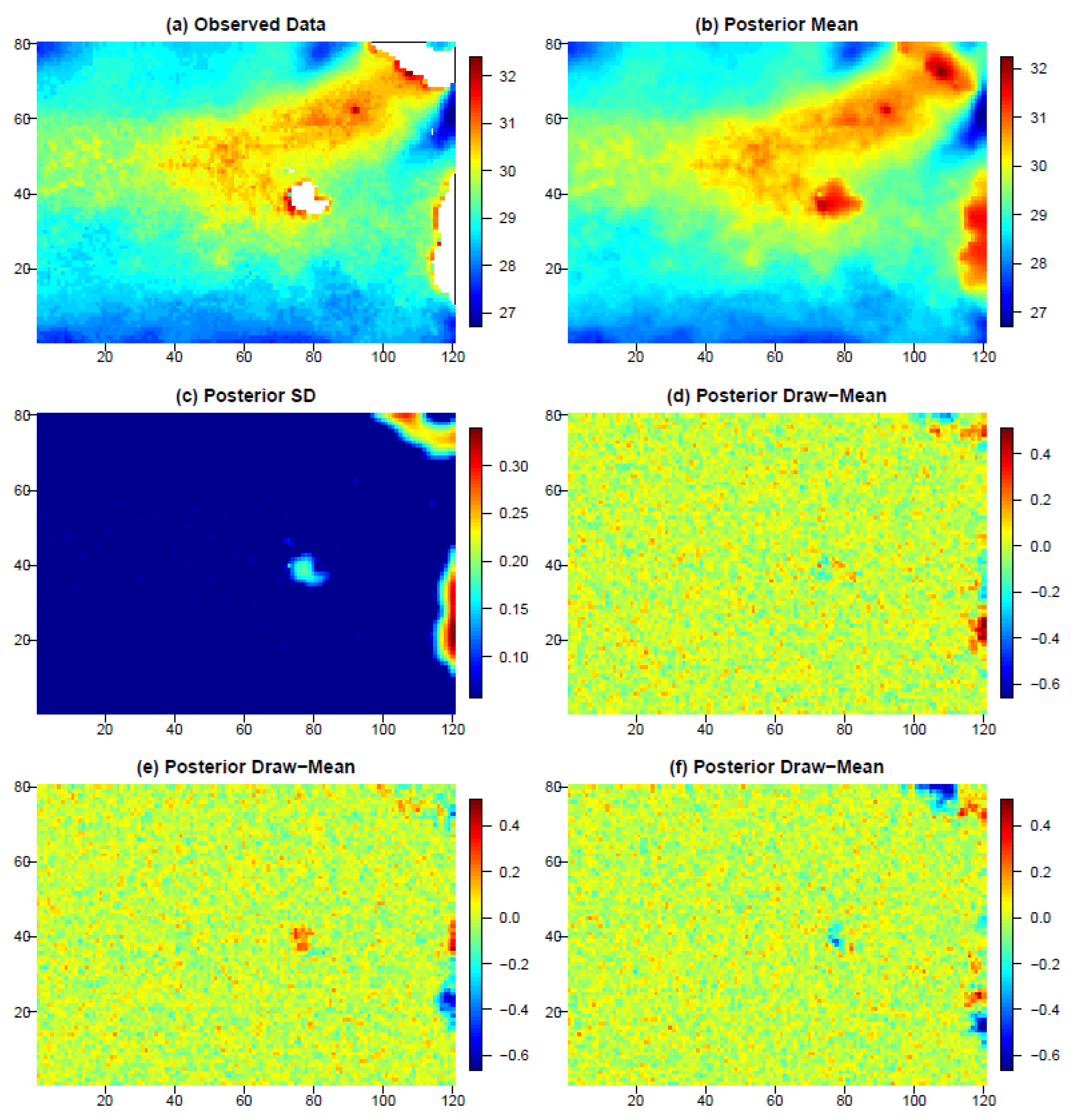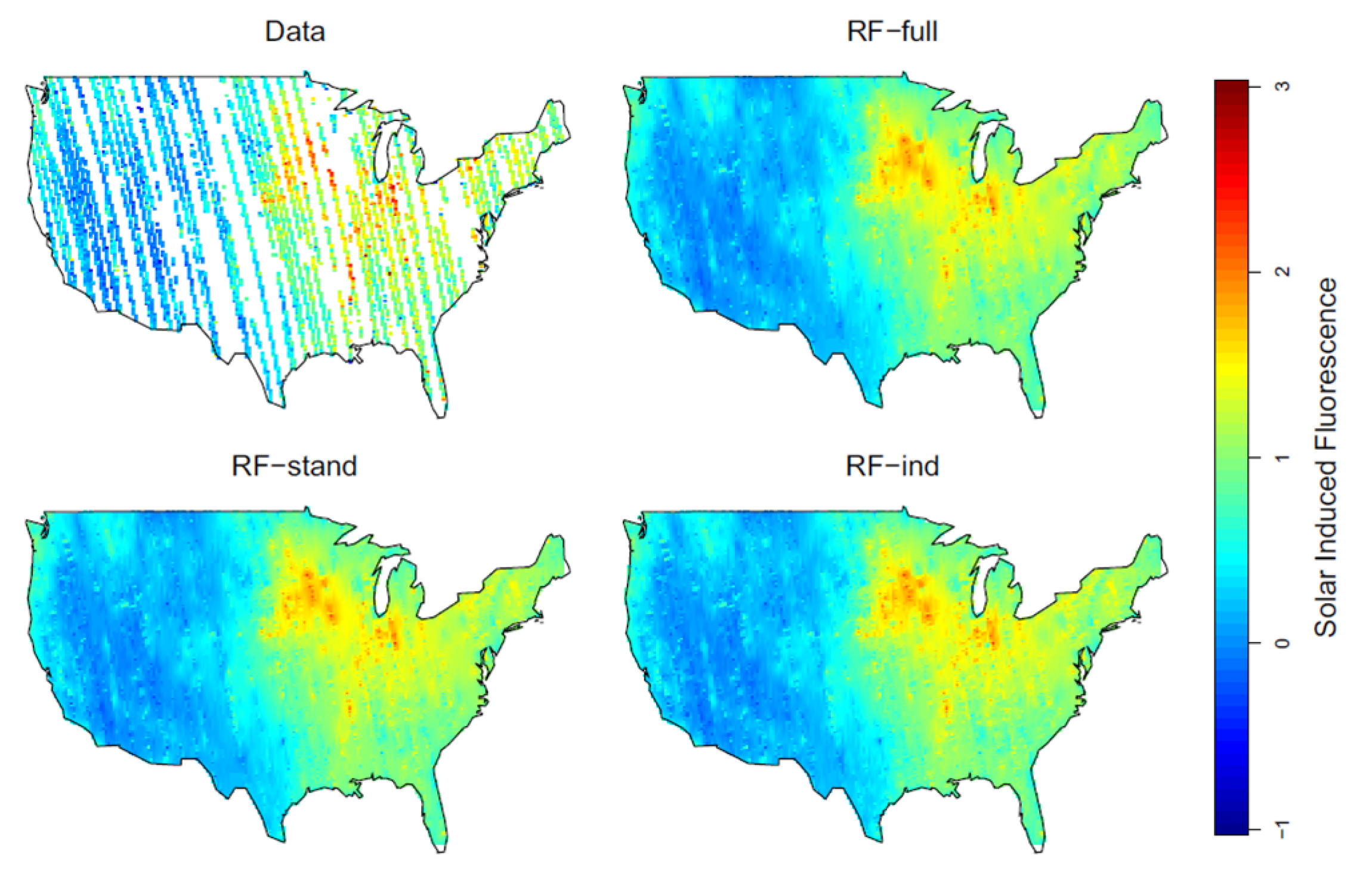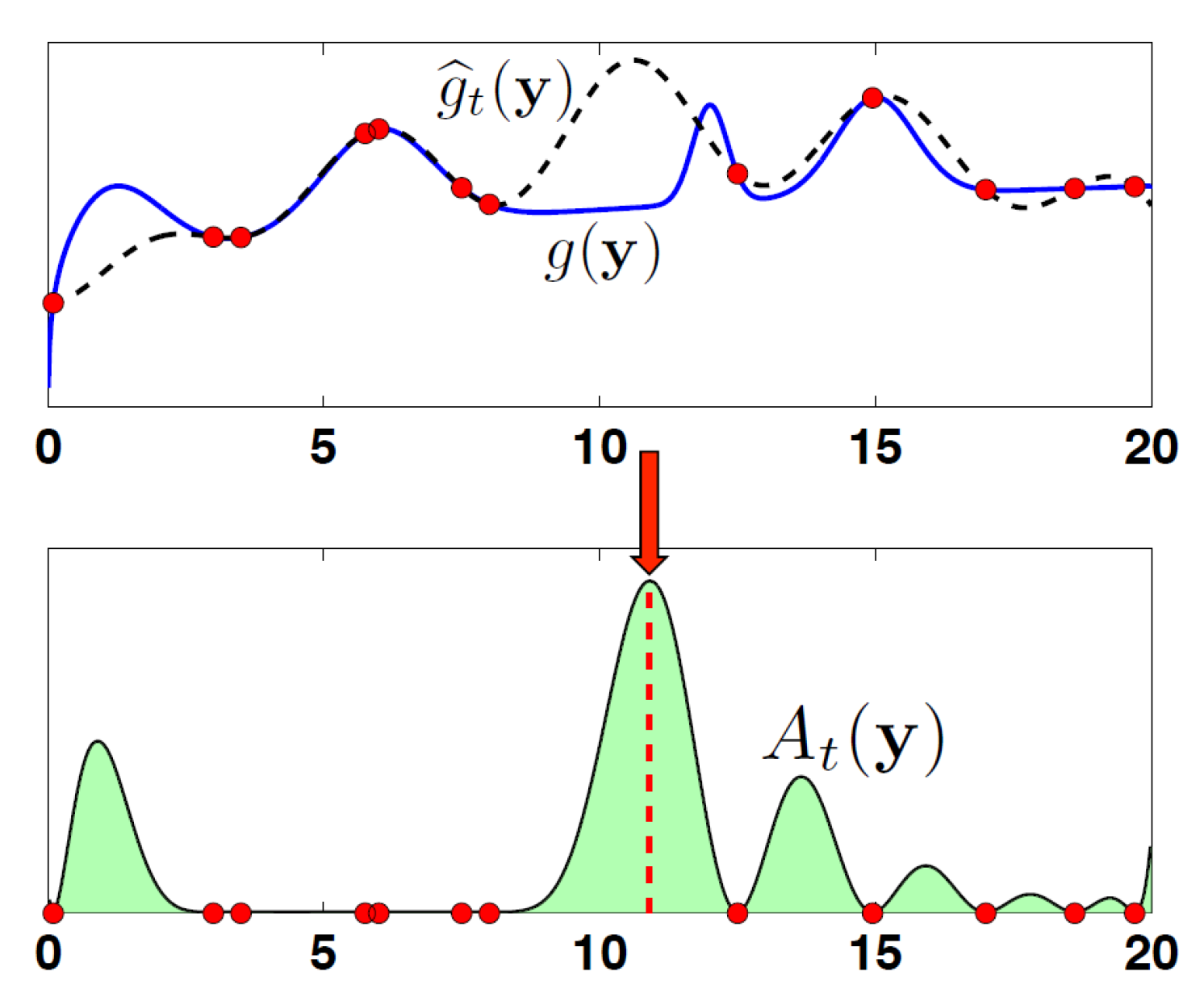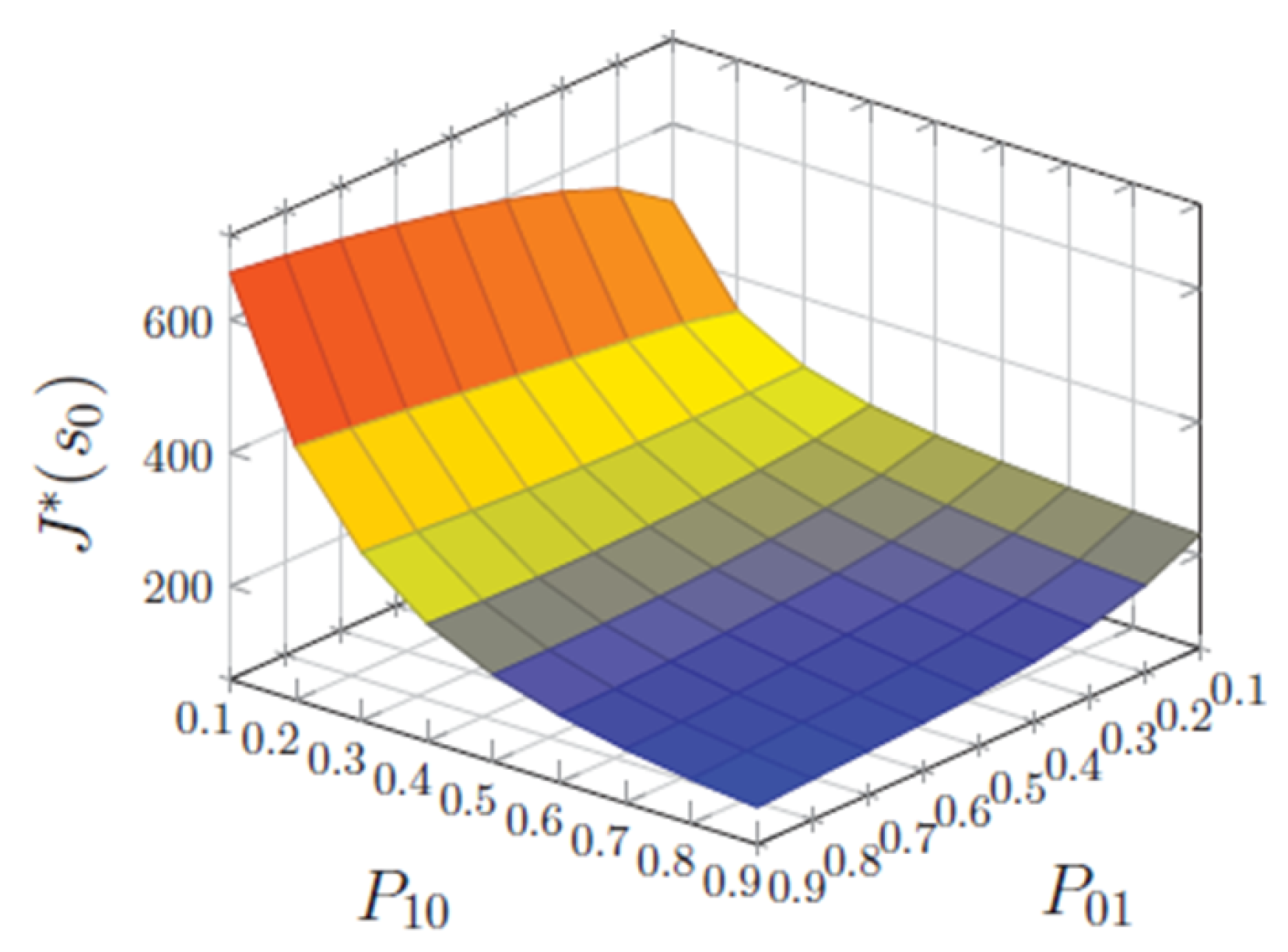1. Introduction
Power grid reliability is crucial to supporting critical infrastructure. Service interruptions can have devastating consequences for communication, emergency, and transportation services, just to name a few. In addition to infrastructure, nearly every element of modern day living relies on a stable and functioning power grid, including heating and cooling systems, lighting, refrigeration, telecommunications, and internet access. Interruptions in the power supply can range from minor inconveniences, such as the temporary loss of internet or television services, to more significant problems, like the inability to access medical equipment or emergency services during critical situations [
1]. As climate conditions worsen, the reliability of the power grid becomes even more significant. Extreme weather events, such as hurricanes, wildfires, or severe storms, can cause serious damage to power infrastructure, leading to prolonged power outages. Rising temperatures and changing weather patterns can strain the grid [
2], resulting in increased demand for electricity, which in turn stresses transmission and distribution systems.
Managing the power grid is no easy task in ideal conditions, to say nothing of the threat of physical and cyber-attacks [
3]. With this in mind, The Grid Communications and Security group at Oak Ridge National Laboratory (ORNL) researches integrated sensing and communications platforms to ensure efficient and reliable grid communications. The proposed system Autonomous Intelligence Measurements and Sensor Systems (AIMS) is currently underway. The goal of this research is to develop a machine-controlled response team with sensors, mobile platforms, communications and data storage and analysis components. These elements will make up a system capable of autonomous inspection and reporting with the explicit goal of improved grid reliability. The system will be comprised of advanced sensors, generative design AI, communications, autonomic systems, swarming technologies, energy harvesting, collaborative operation between drone and command center, and training of grid state measurements.
Figure 1 presents a graphical overview of AIMS. AIMS has significant future implications for infrastructure management.
Burgeoning research that leverages Gaussian processes and machine learning in combination is the subject of this review. Remote sensing plays a major role in AIMS as its main goal will be achieved using sensor equipped drones. Each drone may have one or more sensors collecting different types of pertinent data, not to mention its own data, i.e., battery life, state, LiDAR, etc. It is not the intent of this project to have multiple independently operating drones, but to have a swarm that works together, therefore, the system will need to share data between drones. The data collected by drones will also need to be integrated with the data inherent to the power grid, like power flow, damping, and inertia, and ambient atmospheric data, like wind speed and temperature. I reviewed references directly related to remote sensing, however, remote sensing at power substations using multiple drones and sensors is novel work. For that reason, this paper highlights different types of remote sensing applications. Some applications employ the use of drones, others, the use of ocean crawlers and satellites. The common thread among them is the use of Gaussian processes and other stochastic methods in remote sensing to obtain usable information. This review includes over forty sources from a variety of journals and conference proceedings, most from 2017 to present since this field is quickly developing. Power load and weather forecasting, object detection, physics based simulations, drone exploration, and energy harvesting are areas of interest in this paper.
1.1. Remote Sensing
Remote sensing applications gained significant traction in autonomous surveillance [
5,
6,
7], enabling the monitoring and collection of data related to environmental and industrial processes. Various devices, such as satellites, unmanned aerial vehicles (UAVs) or drones, and ocean crawlers, offer valuable tools for data acquisition in diverse contexts. When it comes to monitoring the power grid, leveraging drone and sensing technology provides a new opportunity. Drones equipped with sensors and cameras can be deployed to capture high-resolution imagery and collect data related power infrastructure, such as transmission lines, substations, and power distribution equipment. This data can include visual imagery, thermal imaging, LiDAR (Light Detection and Ranging) data, or other relevant sensor readings. Algorithms combining GPs and ML can identify patterns, detect anomalies, and predict potential failures or maintenance needs based on the data. This enables more efficient and targeted maintenance and inspection activities, leading to improved grid reliability and reduced downtime. The benefits of using autonomous drones for power grid monitoring are numerous:
Efficiency: Drones can quickly and autonomously cover large areas, making it feasible to monitor extensive power infrastructure efficiently. They can capture data from challenging or inaccessible locations, such as remote areas or areas with difficult terrain, more easily and cost-effectively than traditional manual inspections.
Safety: By using drones, human inspectors can avoid hazardous or risky situations, such as working at heights or navigating dangerous environments. Drones can reach areas that may be unsafe for personnel, minimizing the potential risks associated with manual inspections.
Data accuracy and detail: Drones equipped with advanced sensors can capture high-resolution imagery and collect precise measurements, providing detailed data on the condition of power infrastructure. This allows for better assessment and understanding of the grid’s health and can aid in detecting early signs of potential issues.
Real-time monitoring: Drones can be deployed for regular or periodic monitoring, providing real-time or near real-time data on the grid’s status. This enables proactive maintenance and response to changing conditions promptly.
Cost-effectiveness: Adopting drone technology for power grid monitoring can lead to cost savings compared to traditional inspection methods. Drones can cover larger areas in less time, reduce the need for manual inspections, and improve the efficiency of maintenance operations.
1.2. Gaussian Processes
A Gaussian process (GP) is a generalization of the Gaussian distribution. It is a stochastic process that can be used for regression (GPR) and classification (GPC) [
8,
9]. Using standard notation, if
X is a vector of random variables that follow a Gaussian distribution, then
and
where
is the mean and
is the covariance matrix. The collection of corresponding function values
also follows a Gaussian distribution [
10], so
is a Gaussian process. Assuming independent and identically distributed Gaussian noise
,
defined as follows:
where
is the mean function and
is the covariance function, also called a kernel. Since this method is rooted in probabilistic methods, it provides reliable measures of its own uncertainty and is fairly interpretable [
11], making it ideal for ”physics based” modeling. This interpretability can lead to the discovery of factors that influence physical processes, as opposed to the so called ”black box” of some machine learning (ML) algorithms. However, GPs have high computational costs, especially when dealing with large datasets or complex models. The computational complexity of GPs typically grows cubically with the number of data points, limiting their scalability [
12]. This is a challenge when dealing with large remote sensing datasets, where acquiring a significant amount of data is common. Several sources reviewed in this paper directly address this problem in their methodology.
GPs have exciting implications for power grid operations. Parameter estimation, load forecasting, and anomaly detection are all capabilities of GPs, just to name a few. Many aspects of power grid operations are amenable to physics based modeling given their well established scientific properties (voltage, current, acoustics, temperature, etc.). The power grid is a complex system that provides a crucial service, making the interpretable results of GPs a significant benefit as opposed to "black box" methods.
2. Power Flow and Load Forecasting
Efficient operation of the power grid relies on forecasting. Forecasting in power grid operations is difficult because of its complexity - not only in its technical operation, but also because of climate factors associated with outdoor operation. Wind forces, for example, have serious consequences for power grid operation, but are very difficult to model. The AIMS project provides opportunities to collect diverse data in real-time that can be used in forecasting methods.
A physics-informed Gaussian process regression (PI-GPR) takes advantage of established physical processes to predict the phase angle, angular speed, and wind mechanical power of a three-generator power grid system [
13]. The proposed method is similar to a traditional GPR but uses stochastic differential equations to estimate prior statistics instead of the likelihood. The authors compared the PI-GPR to a standard GPR model, the ensemble Kauman filter (EnKF) method, and autoregressive integrated moving average (ARIMA). They used log predictive probability to measure and compare accuracy. PI-GPR is slightly less accurate but comparable to GPR and had smaller standard deviation overall. EnKF is an online method while PI-GPR as applied is an offline process, therefore, EnKF is less computationally complex. However, because PI-GPR does all of the prior estimating offline, the actual forecast is less computationally complex than EnKF. In terms of performance, PI-GPR is comparable to EnKF. PI-GPR outperformed ARIMA and was more robust to noisy data. Although PI-GPR does not significantly outperform other methods overall, the first two seconds of forecasting are extremely precise.
Figure 2 shows a comparison of PI-GPR and data-driven forecasting.
Another successful method for short-term prediction of electric loads is multi-output Gaussian process regression (MOGP) [
14]. The future predictions (24-hour) are based on previous load, temperature, and dew point values. The authors evaluated MOGP using mean absolute percentage error as an accuracy measure in all cases. Simulation cases for prediction included using previous load, using previous load and dew point data, previous load and temperature data, and previous load, dew point, and temperature data. Six different kernels were tested on MOGP performance: linear, Matérn, polynomial, rational quadratic (RQ), piecewise (P.) polynomial, and radial basis function (RBF). Prediction using previous (7 day) load performed best with linear kernel. In all other cases, best performance occurred using an RQ kernel with 7 days of previous load and 2 days of previous dew point and temperature data. The results showed that prediction using previous load and temperature data outperformed that of previous load and dew point data and that prediction using previous load, dew point, and temperature data outperformed all other cases. To reach its goals for grid state measurements and collaborative operation, AIMS includes the incorporation of ambient data, like temperature and dew point. Opportunities to understand how climate affects the grid and how it can be used to influence grid operations is an interesting area for future work.
Chance constrained optimal power flow (CC-OPF) is a stochastic method used for modeling demand in power grid operations under conditions that allow a "violation probability" [
15]. This method is meant to account for the uncertainties that accompany a complex system like power grid, for example, significant and unexpected weather events. A major drawback of CC-OPF is the associated computational complexity. A novel framework inserting GP into this process using Python [
15] overcomes this issue while maintaining accuracy. Under this framework, the data-driven GP replaces the alternating current (AC) power flow equations, eliminating the need for knowledge of grid configuration and parameters. This framework is put into practice using synthetic data from multiple test cases from the Institute of Electrical and Electronics Engineers (IEEE)[
16]. The authors used the IEEE 9-bus Test System with three generators and three loads and the IEEE 39-bus Test System with ten generators and twenty-one loads with the same voltage level and power ratio. In all cases, loads and renewable sources are uncertain. Root Mean Square Error (RMSE) measures the accuracy of GP prediction and the computation time, generation cost, and the empirical spread of output variables also evaluate the overall performance. In general, RMSE is low, but computational complexity remains an issue in this application and an area for future work.
Initial choices for kernel and basis function in GPR will have different effects on performance. Evaluating load forecasts using multiple kernel and basis functions [
17] gives insight into this effect. The authors used mean average percentage error (MAPE) to consider three basis functions (constant, zero, and linear) and six kernel functions (exponential, squared exponential, Matérn 3/2, Matérn 5/2, rational quadratic, Ard exponential). Best performance varies by location, with different basis-kernel combinations and month of year (see Table 2.1). This does make sense in that weather plays a large factor in this model, but it is not particularly revealing of which combinations should be used. That said, in comparison to ANN and regression tree applications, GPR outperformed both in terms of MAPE.
As mentioned previously, the ACPF solution is non-linear and difficult to solve. A general solution framework using voltage and bus injection using GPR is proposed [
18] in a simulated voltage limit violation scenario. The authors found that a strong relationship between Mean absolute error (MAE) and voltage variance. Thus, higher predicted standard deviation leads to higher approximation error. The proposed method outperformed standard methods including data based methods and is not computationally burdensome. In this case, GPR has shown promise in evaluating non-linear processes while maintaining interpretability.
Load forecasting during anomalous events is difficult given that most applications use historic data that may not reflect the uncertainty of these rare events. Deep Gaussian process (DGP) analysis accounts for limited data in this scenario by mimicking the layering idea of a neural network (NN) [
19]. In this study, DGP outperforms back-propagation NN, sparse GP (SGP) and variational autoencoder DGP (VAE-DGP) in terms of MAPE. In general, the proposed DGP is better at capturing the uncertainty of the limited data during an uncertain event. It is clear in
Figure 3, below, that DGP captures all of the data throughout the entire distribution.
Similarly, maintaining power balance during extreme weather events can be difficult since, by definition, they do not occur very often. A stochastic, multi-scenario method to model electrical power and energy balance that successfully accounts for extreme weather effects [
20] in an application to hydropower and renewable energy. The proposed model is mimizing the total cost function based on certain constraints, as in a traditional OPF problem. In this case, constraints include include unit maintenance constraints, unit operation constraints, inter-regional power trade constraints and system operation constraints. The authors applied this method in a simulation under normal circumstances and under extreme weather for comparison. In the normal condition, operation is more economical but renewable energy spill probability is higher. Under the extreme condition, both operations have load losses, but the extreme condition has less loss. These results show that the extreme weather model can promote renewable energy consumption under extreme weather events and that the model is better at adapting to weather change, both of which maintain power balance. However, this approach should be further explored to determine the tradeoffs between cost and flexibility.
A method using stochastic distributed energy resources [
21] to prompt pickup during blackouts also addresses maintaining power supply during anomalous events. The goal is to improve the system response between interruption and restoration of power supply. The authors apply this method as an optimization problem using ad hoc methods without needing to consider the power flow equations, form the power balance constraints through chance constraints, and enact connectivity constraints. A simulated case study revealed that understanding the stochastic nature of distributed energy resources is valuable for supply adequacy probabilities, but there is still a tradeoff between supply adequacy and load served. This work also did not consider energy balance, which would be necessary in a real-world scenario.
GPs are not always the most suitable method for a problem, specifically if the data or noise is non-Gaussian. A distributionally robust stochastic method for optimal power flow accounts for non-Gaussian forecast error while maintaining interpretability [
22]. Other stochastic methods (like Gaussian methods) must make assumptions about the data that can only lead to overestimation or underestimation of risk. The authors contend that a data-driven approach that does not require these assumptions will allow them to more correctly control the tradeoffs between economic efficiency and risk constrain violation, provided an optimal solution to the power flow problem. This method is successful in demonstrating the control over parameters in applications to overvoltages related to photovoltaic power and N - 1 security line flow constraints related to wind generators [
23]. The strength of this approach is in its modelling of forecast error, which leads to improved performance. That said, this approach is theoretically demanding and was not directly compared to other methods.
3. Temperature Detection from Remotely Sensed Images
Temperature sensing for identifying hot spots on power lines and transformers is valuable to power grid operations. Hot spots can be indicative of failure or potential failure and affect efficiency. Infrared (IR) is a convenient way to estimate temperature and IR cameras can be easily mounted on drones for inspection, as in the AIMS project. A new method using LiDAR and long-distance IR cameras [
24] using Temperature-Radiation and Radiation-Digital distance mapping to approximate temperature more accurately. The process uses an offline method for data collection and interpolation (calculating distance through digital count and radiation via Planck’s law) and a online method for analysis. In the online process, LiDAR provides the distance measure and the IR camera provides the radiation measure. In a blackbody application, the proposed method outperformed forward looking IR and single mapping method at 3.5 and 7 m according to MSE. That said, under non-controlled conditions, atmospheric elements like humidity may have negative effects on results.
An application to stream management does consider the problems atmospheric conditions can add to temperature estimation from high and low resolution IR images [
25]. Spectral mixing analysis (SMA) is the method of choice since it accounts for spectral signature, the topography, shadowing effects and the spatial resolution. This method was not compared to others and is limited by instrumentation of the time (2001). Although this analysis is focused on stream management, it is relevant to power grid applications in that the stream is an asset that must be distinguished from air temperature surrounding it, much like power lines.
A direct application of IR imaging for hot spot identification [
26] using drones leverages information from both IR images and visible light images using image registration methodology. This process involves first identifying the power lines in the image using a Gaussian filter, edge detection, and Hough transform. After identifying power lines, a histogram threshold is used for hot spot identification. Once again, this method was to test functionality and was not compared to other methods, nor did it estimate temperature directly.
4. Wind Speed Forecasting
Climate change presents new challenges for power grid operation. Strong winds can damage infrastructure by causing galloping power lines, flying branches and debris, and downing power poles. Extreme high or low temperatures create significant demand on power grids. They can cause power lines to expand or contract due to their material composition. Weather variables are random in nature, therefore difficult to model.
Wind speed is difficult to forecast because it is random in nature and therefore there is no probability distribution that totally describes it. [
27] compares four different distributions: a 2-parameter Weibull, 3-parameter Weibull, Gamma, and Lognormal distributions to ascertain the most suitable. Table 2.2 shows the results applied to wind data. The 3-parameter Weibull outperforms the other distributions, but none are significantly fit. Statistically, these distributions are interpretable, but a more flexible distribution may be useful here.
Statistical models are usually limited to short term prediction, but hybrid models seek to overcome this [
28]. GP regression combined with other meteorological data and atmospheric stability ratings on public data from UK weather stations outperformed the current numerical method. However, it was somewhat location dependent. Furthermore, this method was interested in wind prediction to improved wind power output prediction more accurately, not specifically for forecasting power grid loads. Other research in hybrid models combing GPs with RNN similarly seeks to increase prediction accuracy while maintaining the probabilistic properties of GPs [
29]. This method uses GP to provide necessary information to enhance the RNN model. The authors applied this method to data from the National Wind Energy Technology Center to assess its accuracy. The method outperforms other state of the art methods in terms of RMSE, but accuracy decreases as the forecast step increases and computational time was not reported.
A sparse GP with moving window strategy is proposed for predicting wind gusts, specifically [
30]. Historical data from numerical weather prediction (NWP) and the European Center for Medium-Range Weather forecasts (ECMWF), as well as observed data from the 2022 Winter Olympics were used to train and validate the proposed method. Compared to the ECMWF, GP regression, random forest, ECMWF-Sparse GP regression, and ECMWF-multiple linear regression models, the proposed method outperforms the others in both short term and long term forecasting. The authors note that the spatial correlation of the input variables may be affecting the accuracy of this method. In addition to the sparse method, the moving window is meant to reduce computational complexity, although computational times are not reported.
An application using Warped Gaussian Process (WGP) is presented in [
31]. The authors use sparse online WGP in order to account for the time-based data and the high computational cost associated with WGP. Once again, the purpose of this analysis is to better predict wind power production. On data from an actual wind farm, the proposed method was competitive with GP and splines quantile regression. However, future work would improve hyperparameter estimation, include heteroscedasticity, changes in wind direction, and terrain.
Figure 4 shows the wind power production compared to the observed data and with confidence intervals. The results show the flexibility of WGP in action.
6. Exploration
One element of drone navigation is exploration. Programming a specific path for a drone can be efficient in scenarios where the operation is routine, however, in the case that an event is not routine, an autonomous drone needs to be able to make path decisions. In these events, a drone may need to be deployed to gather information and would ideally know when it has collected enough or must continue searching. GPs can determine the best trajectory based on available data while measuring the uncertainty of the unexplored area, i.e., what is the probability that an unexplored area would have new, valuable information.
Modern remote sensing provides a novel way to characterize important features of unexplored phenomena of interest [
43]. The authors treat the combination of the available measurements and the probable uncertainty as an optimization problem. Parameters that estimate the cost of maneuvering are also incorporated. The authors evaluate this process in a simulated space exploration with test cases that emphasize and de-emphasize exploration. Case 1 favored exploration over data refinement, Case 2 placed less emphasis on exploring the whole field of interest, Case 3 decreases emphasis on exploration over time as data is collected, and Case 4 made emphasis on exploration dependent on the cost to perform maneuvering. Best performance occurred under conditions that favor exploration.
Figure 8 shows the comparison in for all four cases.
The autonomous exploration of unknown phenomena is further investigated via a process termed ”informative planning” [
44]. In this case the focus is on long-term planning, where the computational expense remains a continuous problem as data accumulates. Therefore, the authors use Sparse Online Gaussian Processes (SOGP) to reduce high computational costs. Online learning is pertinent here as the SOGP needs to incorporate the temporal variation of the environment, reestimating the hyperparameters when needed. This process needs spatio-temporal cues to justify the computational cost of any updates. The authors applied this method to a simulated ocean environment using real world salinity data. When hyperparameters were manually set, performance was weak, but data-driven selection improved performance and reflected ground truth.
